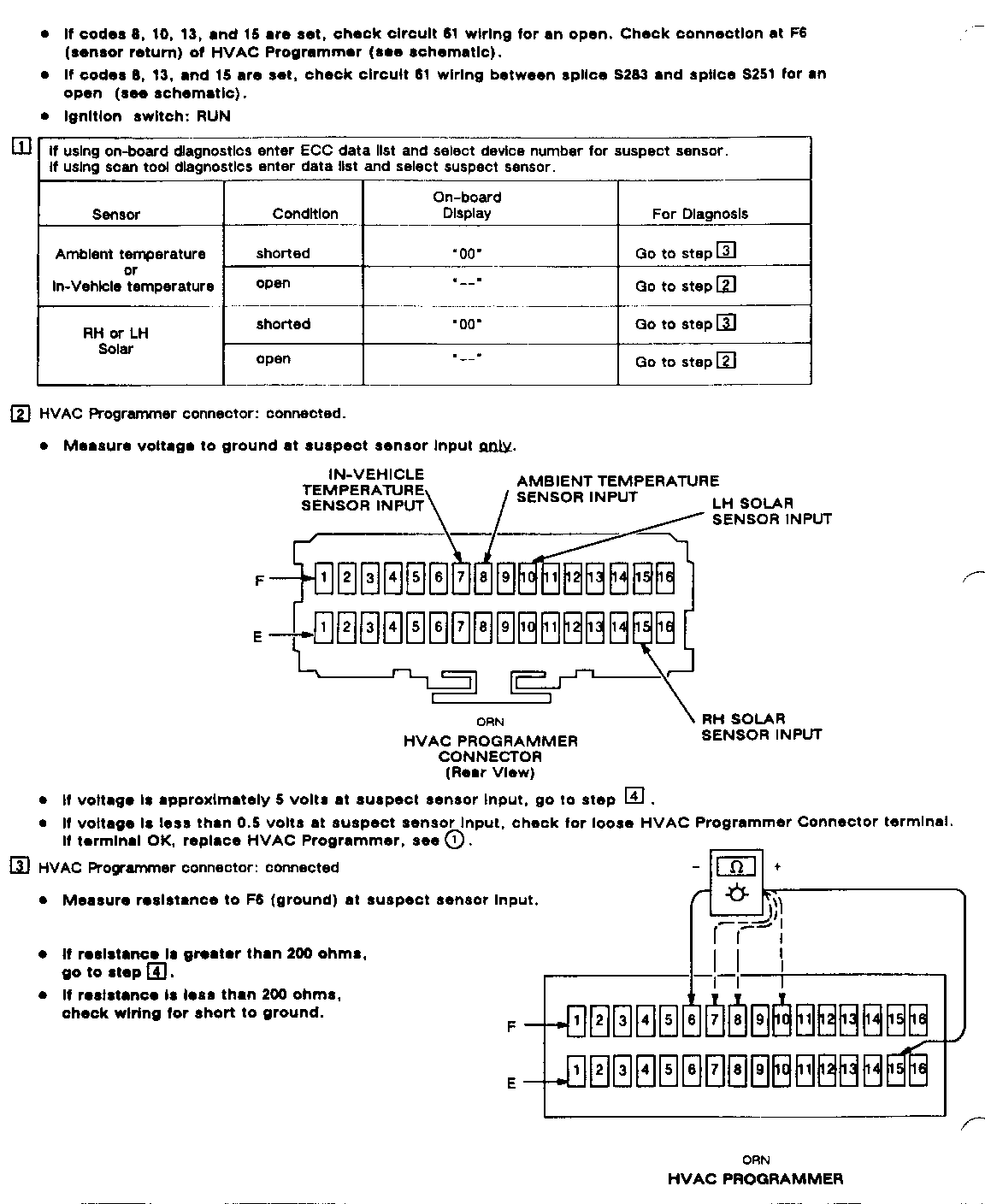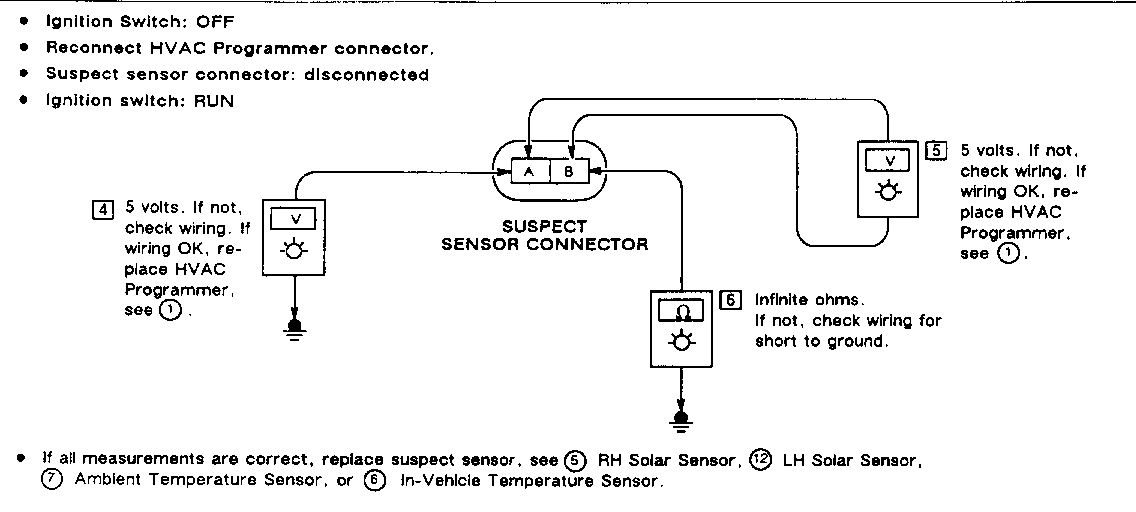ELECT. SYSTEM MANUAL UPDATE REVISED A/C SENSOR TEST CHART

SUBJECT: ELECTRICAL SYSTEMS MANUAL UPDATE - ELECTRICAL DIAGNOSIS - REVISED AIR CONDITIONING (CJ2) SENSOR TEST CHART
MODELS AFFECTED: 1992 LESABRE
Dual Air Conditioning (CJ2), Step 3 of A: Sensor Test Chart on Page 372 has been revised to include the testing of the RH Solar Sensor Input.
Please refer to the following chart for proper system diagnosis.
Please update your Electrical Systems Manuals accordingly.
Refer to Figure 1 for the following:
o If codes 8, 10, 13, and 15 are set, check circuit 61 wiring for an open. Check connection at F6 (sensor return) of HVAC Programmer (see schematic). o If codes 8, 13, and 15 are set, check circuit 61 wiring between splice S283 and splice S251 for an open (see schematic). o Ignition switch: RUN
[1] If using on-board diagnostics enter ECC data list and select device number for suspect sensor. If using scan tool diagnostics enter data list and select suspect sensor.
On-board Sensor Condition Display For Diagnosis ------------------- --------- ------- ------------- Ambient temperature shorted "00" Go to step [3] or In-Vehicle temperature open -- Go to step [2]
RH or LH shorted "00" Go to step [3] Solar open -- Go to step [2]
[2] HVAC Programmer connector: connected. o Measure voltage to ground at suspect sensor input only. o If voltage is approximately 5 volts at suspect sensor input, go to stop [4]. o If voltage Is less than 0.5 volts at suspect sensor input, check for loose HVAC Programmer Connector terminal. If terminal OK, replace HVAC Programmer, see (1).
[3] HVAC Programmer connector: connected o Measure resistance to F6 (ground) at suspect sensor input. o If resistance is greater than 200 ohms, go to stop [4]. o If resistance is less than 200 ohms, check wiring for short to ground.
A: SENSOR TEST (Refer to Figure 2): ----------------------------------- o Ignition Switch: OFF o Reconnect HVAC Programmer connector. o Suspect sensor connector: disconnected o Ignition switch: RUN o If all measurements are correct, replace suspect sensor, see (5) RH Solar Sensor, (12) LH Solar Sensor, (7) Ambient Temperature Sensor, or (6) in-vehicle Temperature Sensor.


General Motors bulletins are intended for use by professional technicians, not a "do-it-yourselfer". They are written to inform those technicians of conditions that may occur on some vehicles, or to provide information that could assist in the proper service of a vehicle. Properly trained technicians have the equipment, tools, safety instructions and know-how to do a job properly and safely. If a condition is described, do not assume that the bulletin applies to your vehicle, or that your vehicle will have that condition. See a General Motors dealer servicing your brand of General Motors vehicle for information on whether your vehicle may benefit from the information.
